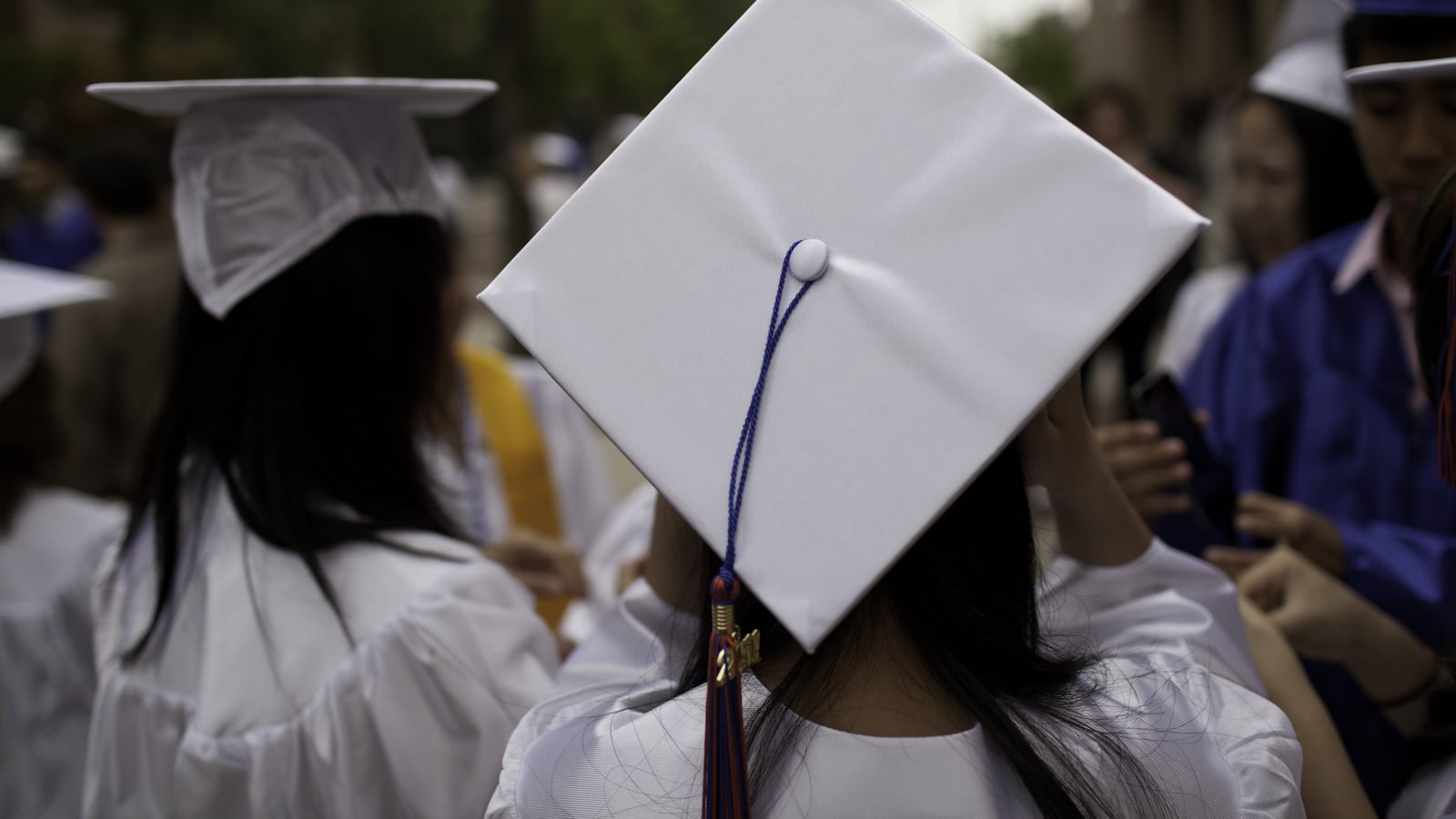Proponents of New York City’s specialized high school exam, the test the mayor wants to scrap in favor of a new admissions system, defend it as meritocratic. Opponents contend that when used without consideration of school grades or other factors, it’s an inappropriate metric.

One thing that’s been clear for decades about the exam, now used to admit students to eight top high schools, is that it matters a great deal.
Students admitted may not only receive a superior education, but also access to elite colleges and eventually to better employment. That system has also led to an under-representation of Hispanic students, black students, and girls.
As a doctoral student at The Graduate Center of the City University of New York in 2015, and in the years after I received my Ph.D., I have tried to understand how meritocratic the process really is.
First, that requires defining merit. Only New York City defines it as the score on a single test — other cities’ selective high schools use multiple measures, as do top colleges. There are certainly other potential criteria, such as artistic achievement or citizenship.
However, when merit is defined as achievement in school, the question of whether the test is meritocratic is an empirical question that can be answered with data.
To do that, I used SHSAT scores for nearly 28,000 students and school grades for all public school students in the city. (To be clear, the city changed the SHSAT itself somewhat last year; my analysis used scores on the earlier version.)
My analysis makes clear that the SHSAT does measure an ability that contributes to some extent to success in high school. Specifically, a SHSAT score predicts 20 percent of the variability in freshman grade-point average among all public school students who took the exam. Students with extremely high SHSAT scores (greater than 650) generally also had high grades when they reached a specialized school.
However, for the vast majority of students who were admitted with lower SHSAT scores, from 486 to 600, freshman grade point averages ranged widely — from around 50 to 100. That indicates that the SHSAT was a very imprecise predictor of future success for students who scored near the cutoffs.
Course grades earned in the seventh grade, in contrast, predicted 44 percent of the variability in freshman year grades, making it a far better admissions criterion than SHSAT score, at least for students near the score cutoffs.
It’s not surprising that a standardized test does not predict as well as past school performance. The SHSAT represents a two and a half hour sample of a limited range of skills and knowledge. In contrast, middle-school grades reflect a full year of student performance across the full range of academic subjects.
Furthermore, an exam which relies almost exclusively on one method of assessment, multiple choice questions, may fail to measure abilities that are revealed by the variety of assessment methods that go into course grades. Additionally, middle school grades may capture something important that the SHSAT fails to capture: long-term motivation.
Based on his current plan, Mayor de Blasio seems to be pointed in the right direction. His focus on middle school grades and the Discovery Program, which admits students with scores below the cutoff, is well supported by the data.
In the cohort I looked at, five of the eight schools admitted some students with scores below the cutoff. The sample sizes were too small at four of them to make meaningful comparisons with regularly admitted students. But at Brooklyn Technical High School, the performance of the 35 Discovery Program students was equal to that of other students. Freshman year grade point averages for the two groups were essentially identical: 86.6 versus 86.7.
My research leads me to believe that it might be reasonable to admit a certain percentage of the students with extremely high SHSAT scores — over 600, where the exam is a good predictor —and admit the remainder using a combined index of seventh grade GPA and SHSAT scores.
When I used that formula to simulate admissions, diversity increased, somewhat. An additional 40 black students, 209 Hispanic students, and 205 white students would have been admitted, as well as an additional 716 girls. It’s worth pointing out that in my simulation, Asian students would still constitute the largest segment of students (49 percent) and would be admitted in numbers far exceeding their proportion of applicants.
Because middle school grades are better than test scores at predicting high school achievement, their use in the admissions process should not in any way dilute the quality of the admitted class, and could not be seen as discriminating against Asian students.
The success of the Discovery students should allay some of the concerns about the ability of students with SHSAT scores below the cutoffs. There is no guarantee that similar results would be achieved in an expanded Discovery Program. But this finding certainly warrants larger-scale trials.
With consideration of additional criteria, it may be possible to select a group of students who will be more representative of the community the school system serves — and the pool of students who apply — without sacrificing the quality for which New York City’s specialized high schools are so justifiably famous.
Jon Taylor is a research analyst at Hunter College analyzing student success and retention.
About our First Person series:
First Person is where Chalkbeat features personal essays by educators, students, parents, and others trying to improve public education. Read our submission guidelines here.


